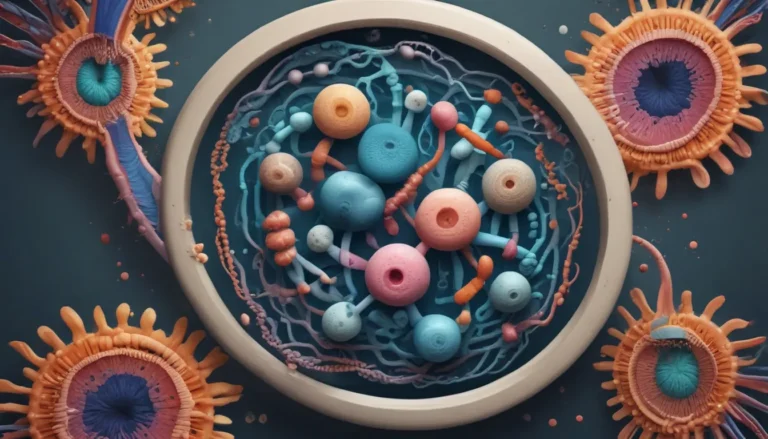A Note About Images: The images used in our articles are for illustration purposes only and may not exactly match the content. They are meant to engage readers, but the text should be relied upon for accurate information.
The lipid bilayer is not just a simple barrier; it is a bustling hub of cellular life! Composed of phospholipids, this structure plays a vital role in maintaining the integrity of cell membranes. In this article, we will explore 18 enigmatic facts about the lipid bilayer that highlight its significance in cellular biology. From its composition to its role in cell signaling and disease, we will delve into the complexities of this essential cellular component.
The Composition of Lipid Bilayer
The lipid bilayer primarily consists of phospholipids, with hydrophilic heads and hydrophobic tails. This unique arrangement forms a barrier that separates the inside of the cell from the external environment.
Fluidity and Flexibility
One fascinating aspect of the lipid bilayer is its fluidity. The lipids can move laterally within the layer, allowing for membrane flexibility essential for processes like cell division and fusion.
Selective Permeability
The lipid bilayer has selective permeability, regulating the passage of molecules and ions in and out of the cell. This property is crucial for maintaining cellular homeostasis.
Essential Role in Cell Membrane Structure
The lipid bilayer serves as the foundation of cell membranes, providing stability, holding membrane proteins, and facilitating cell signaling and recognition processes.
Cholesterol in Lipid Bilayer
Cholesterol is a key component of the lipid bilayer, regulating membrane fluidity and stability against temperature changes.
Self-Assembly of Lipid Bilayer
Lipid bilayers have the remarkable ability to self-assemble spontaneously in aqueous solutions. This property is essential for the formation of cellular membranes during development.
Lipid Rafts
Lipid rafts are specialized regions within the lipid bilayer that play a crucial role in cell signaling, protein sorting, and membrane trafficking.
Role in Cell-to-Cell Communication
The lipid bilayer facilitates cell-to-cell communication by providing a platform for membrane receptors and signaling molecules.
Importance in Drug Delivery
Understanding the lipid bilayer structure is vital for drug delivery systems, with liposomes being widely used for targeted drug delivery in pharmaceutical research.
Role in Membrane Protein Function
Membrane proteins embedded within the lipid bilayer are influenced by the lipid environment, allowing them to carry out essential cellular processes.
Role in Energy Production
The lipid bilayer plays a significant role in energy production within cells by providing a platform for ATP synthesis and the electron transport chain.
Role in Cell Shape and Motility
The lipid bilayer contributes to cell shape and motility by providing a flexible membrane that can change shape to facilitate cellular movement.
Susceptibility to Oxidative Damage
Lipid bilayers are vulnerable to oxidative damage, which can lead to membrane disruption and cellular dysfunction.
Lipid Raft Involvement in Diseases
Altered lipid raft composition is associated with various diseases, providing insight into potential therapeutic targets.
Role in Transport Across Membranes
The lipid bilayer acts as a barrier and facilitator for the transport of molecules across cell membranes, maintaining cellular homeostasis.
Influence of Temperature on Lipid Bilayer
Temperature affects the fluidity and stability of the lipid bilayer, impacting cellular function.
Role in Cell Signaling Cascades
The lipid bilayer is involved in initiating and propagating cell signaling cascades, playing a crucial role in cellular communication.
Importance in Artificial Membrane Research
Studying the properties of the lipid bilayer contributes to the development of synthetic membranes for various applications.
Conclusion: Unveiling the Secrets of Life Itself
The lipid bilayer is a fundamental structure that influences cellular processes and functions. Understanding its complexities is essential for unraveling the mysteries of cellular biology. By exploring the enigmatic world of the lipid bilayer, we gain valuable insights into its role in cellular organization and function.
FAQs
-
What is a lipid bilayer?
A lipid bilayer is a double-layered structure made of phospholipids that forms cell membranes, providing a barrier between the cell’s interior and the external environment. -
How is the lipid bilayer formed?
The lipid bilayer spontaneously forms in aqueous environments due to the hydrophobic properties of phospholipids. -
What is the role of the lipid bilayer in cells?
The lipid bilayer serves as a barrier, regulates molecule transport, and facilitates cell signaling and communication. -
How does the fluidity of the lipid bilayer impact cell function?
Fluidity allows for essential cellular processes by enabling the movement of proteins and lipids within the membrane. -
What is the significance of lipid rafts within the lipid bilayer?
Lipid rafts are microdomains that play a crucial role in organizing molecules involved in cell signaling, membrane trafficking, and cell adhesion.
Embark on a journey to explore the mysteries of the lipid bilayer and uncover the intricacies of cellular life. Dive deeper into the world of cellular biology by understanding the role of lipid bilayers in cellular structure and function.






